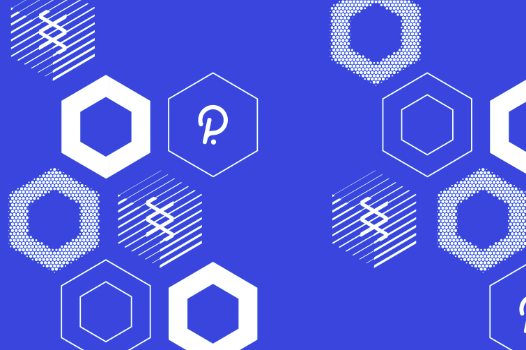Polkadot (DOT): A Next-Generation Blockchain Protocol | Deep Dive
Review Date: March 29, 2021 |
INTRODUCTION
Polkadot is a next-generation blockchain protocol connecting multiple specialized blockchains into one unified network. Designed as part of a broad vision for a web that returns control to individuals over internet monopolies, Polkadot builds on previous blockchain networks’ revolutionary promises while offering several fundamental advantages.
SCALE
An isolated blockchain can only handle limited traffic. Polkadot is a sharded multi-chain network, which means that it can process multiple transactions on multiple chains in parallel, eliminating the bottleneck of processing transactions one by one on the legacy network. This parallel processing capability significantly improves scalability, creating suitable conditions for more adoption and future growth. Polkadot’s shard chains are called “parachains” because they run in parallel on the network

SPECIALIZE
When it comes to blockchain architecture, one model is not suitable for all. All blockchains will make trade-offs to support different functions and scenarios. For example, one chain can optimize identity management, while another chain can optimize file storage. On Polkadot, each blockchain can have a new design optimized for specific scenarios.
This means that the blockchain can provide better services while also improving efficiency and security by omitting unnecessary code. Based on the Substrate development framework, the team can develop and customize their blockchain faster and more efficiently than ever before.
SECURE
By enabling centralized security, Polkadot allows chains to interact with each other in a certain way. Although the chains remain independent in their governance, they are unified in terms of security.
CROSS-CHAIN COLLABORATION
Networks and applications on Polkadot can share information and functions like smartphones without relying on centralized service providers with questionable data practices. Unlike previous networks that mainly operated as independent environments, Polkadot provides interoperability and cross-chain communication.
This structure opens the door to innovative new services and allows users to pass information between chains. For example, a chain that offers financial services can communicate with another chain, which provides access to real-world data (called the Oracle chain), such as feeding tokenized equities trading through spot market prices.

SELF-GOVERN
Communities on Polkadot govern their network according to their wishes and hold a transparent stake in the future of the entire Polkadot network governance. The team can customize and optimize the blockchain’s governance according to their own needs, try new ideas, or exchange pre-built modules to speed up deployment. As time goes by, the blockchain governance model can be even more perfect and upgrade as needs and conditions change.
EASIER UPGRADE
Like all software, blockchain needs to be updated to stay relevant and improve over time. However, upgrading the traditional chain requires a “hard fork,” which creates two separate transaction histories that can divide a community into two, usually taking several months of work. Polkadot supports fork-free upgrades, allowing blockchains to develop and adapt as better technologies emerge quickly.
In summary, these core functions may open up a new world, allowing people to regain control of their digital lives. Some teams are already building effective solutions for a range of Polkadot applications, including finance, gaming, digital identity, the Internet of Things, supply chain management, social networking, and cloud technology.
WEB3 FOUNDATION

The Web3 Foundation is the central organization behind Polkadot. It provides funding for the implementation of multiple clients, develops the Polkadot community through events and ambassador programs, and cooperates with projects to establish and expand Polkadot.
The Web3 Foundation also works with external development teams to build a bridge between Polkadot and the existing blockchain system. Some other new teams will also use the finalization, security, and interoperability provided by the Polkadot relay chain to build a blockchain.
These are the main functions and products of Polkadot. Polkadot helps teams who want to develop projects create impossible applications before through shared security mechanisms and trust-less messaging between chains. Polkadot extends the capabilities of previous blockchain technologies such as Ethereum and Bitcoin.

POLKADOT WATCHLIST
POLKADOT

Polkadot is an open-source sharding multi-chain protocol that facilitates cross-chain transmission across any data or asset type (not only tokens) so that various blockchains can interoperate.
Polkadot’s native DOT token has three specific purposes: to provide network governance, operation and to create parachains through bonding.
Polkadot’s large-scale interoperability through a set of standard validators helps protect its multiple blockchains and allows them to scale transactions by distributing data across various parachains.
The network uses the NPoS (Nominated Proof of Stake) mechanism to select verifiers and nominators and maximize the chain’s security. This unique effectiveness scheme allows the chains to interact under the same rules safely but remains independently governed.

KYLIN NETWORK

Kylin Oracle is a general oracle protocol. Its primary function is to build an on-chain data warehouse through decentralization and distrust and provide accurate social data and market data for various DeFi applications and blockchain projects.
Kylin Oracle is characterized by providing reliable, efficient, and untrusted solutions for off-chain data applications. Kylin Oracle built on Substrate will connect to the Polkadot ecosystem with a parachain, share the basic consensus of Polkadot, operate in a fully decentralized and highly scalable manner, and ensure the security of the protocol and network performance.
Kylin Oracle contains five entities, including data users, data warehouses, Oracle nodes, arbitration nodes, and blockchain nodes. These five entities represent the main components of the Kylin architecture.

POLKASTARTER

Polkastarter is a blockchain platform designed to provide an easy-to-use launchpad for cross-chain token pools and auctions. It is the most common method used by early blockchain projects that wish to raise funds and distribute their tokens simultaneously.
Through Polkastarter, blockchain projects can easily create their cross-chain exchange pools to raise funds safely. Users can invest risk-free because the exchange is performed automatically by smart contracts.
POLS is the native utility token of the Polkastarter platform, which plays many roles in its ecosystem, used for liquidity mining, governance, payment of transaction fees, and qualification to participate in the exclusive POLS holders pool.

DARWINIA

Darwinia Network is a blockchain network based on Substrate technology. It is also a part of the Polkadot ecosystem, and at the same time differentiated from Polkadot, Darwinia Network focuses on cross-chain token.
Blockchain Dapps can efficiently perform cross-chain token transactions and transfer through the Darwinia Network. For example, Cryptokitties can transform its NFT (Kitties) on the Ethereum into NFT on EOS through the Darwinia chain; players on the Ethereum and players on the EOS can play the Evolution Land game simultaneously through the Darwinia Network.
Simultaneously, thanks to the Polkadot ecosystem, Darwinia Network can link to a broader range of games and players.
RING is the native token of Darwinia Network. It has used to pay for the GAS fee of the on-chain transactions and cross- chain services. RING can be staked for staking rewards and obtaining voting power to participate in the governance.

EDGEWARE

Edgeware is a high-performance, self-upgrading WASM smart contract platform in the Polkadot ecosystem. Participants vote, delegate, and fund each other to upgrade the network.
On Edgeware developers can forgo managing their chain and focusing on building more advanced applications using smart contracts’ simplicity and flexibility. Ethereum developers can deploy Solidity/EVM smart contracts with few or no changes, while new developers can get started with Rust and WebAssembly.
Builders and organizers can find a place in Edgeware’s many collectives funded by the on-chain treasury to expand the network and explore new ideas.


PHALA NETWORK
Phala Network is a privacy-preserving cloud computing service that offers computing power comparable to existing cloud services and protects managed programs’ privacy. Based on TEE-Blockchain Hybrid Architecture, developers can deploy confidential smart contracts running inside the CPU’s TEE Enclaves.
Phala Network guarantees the reliable execution of smart contracts while keeping the data private. Confidential contracts run in miner nodes with Trusted Computing capable hardware, which guarantees the contract data’s secrecy.

ROBONOMICS NETWORK

Robonomics is the first open-source platform that people can use to provide robots as a service to end-users or digital markets.
The company supports Web3 technology, enabling the exchange of technical and economic information between man and machine.
With the XRT token’s help, economic incentives will be created to maintain robotics through a decentralized network of providers.
Robonomics is a purely technical open-source project. The project opens up new users and robotics experts to developers. To this end, the company associates Ethereum and Polkadot with the Robot Operating System (ROS). The number of robotics experts familiar with ROS is approximately 22,000 developers.


CRUST NETWORK
Crust provides a decentralized storage network of the Web3 ecosystem. It supports multiple storage layer protocols such as IPFS and exposes storage interfaces to the application layer. Crust’s technical stack is also capable of supporting a decentralized computing layer. It is designed to build a decentralized cloud ecosystem that values data privacy and ownership.

StaFi

Stafi is a decentralized protocol that empowers liquidity. It encompasses three layers—bottom, contract, and application layers. The bottom layer is mainly based on a blockchain system established by Substrate (a blockchain architecture developed by Parity). The whole architecture integrates many development modules, including consensus module, P2P module, and Staking module, etc.).
The contract layer support created a variety of Staking contracts, such as Staking contracts for XTZ, Atom, and Dot, respectively. The token holder can Stake through Staking Contract, consistent with the ordinary Stake’s inflation incentives. However, the difference is that The holder also can obtain rTokens.
Last, the application layer supports third-party Stafi-based APIs or customized APIs to create a decentralized bonded asset trading market for rTokens to circulate, transfer, and trade on the Stafi protocol.

CHAINX
ChainX is a community-driven project built on the next-generation blockchain framework substrate. The largest Layer-2 network of Bitcoin using the Light-client protocol with smart contract support will evolve into the Polkadot network as a secondary relay chain in the future.
ChainX uses light client inter-chain technology. Asset cross-chain is a process in which users lock assets in the original chain, map the assets to the target chain where withdrawals can be made, and finally unlock the assets in the original chain.

MARKET SUMMARY
Polkadot was the most successful cryptocurrency in 2020. It is seen as a promising blockchain that can replace Ethereum’s dominance in 2021. When the decentralized finance boom began, it attracted the attention of many other dominant virtual asset investors.
This technology will be implemented in the main network in 2021. The external review of the “Parachains v1” code and the different bridges’ primary functions are already underway. For all of the investors, the first few months of 2021 are very exciting.
With the Web 3 Foundation’s support, the Polkadot ecosystem becomes more safe and stable in the crypto market. The more society that supports this ecosystem, the lower the risk on management issues. Projects with Web 3 guarantee are better investments than some newly introduced coins that also create waves in the crypto industry.
In the long term, those projects on our watchlist will become popular with high potential. Some teams did not create their native parachain but chose the Polkadot ecosystem’s Defi-chain architecture. Liquid piles are a subcategory of Defi. It enables people with staking signs to obtain instant liquidity through tradable synthetic tokens without locking time.
DISCLAIMER
Token Metrics Media LLC is a regular publication of information, analysis and commentary focused especially on blockchain technology and business, cryptocurrency, blockchain-based tokens, market trends, and trading strategies.
Token Metrics Media LLC does not provide individually tailored investment advice and does not take a subscriber’s or anyone’s personal circumstances into consideration when discussing investments; nor is Token Metrics Media LLC registered as an investment adviser or broker-dealer in any jurisdiction.
Information contained herein is not an offer or solicitation to buy, hold or sell any security. The Token Metrics team have advised and invested in many blockchain companies. A complete list of their advisory roles and current holdings can be viewed here: https://tokenmetrics.com/disclosures/





